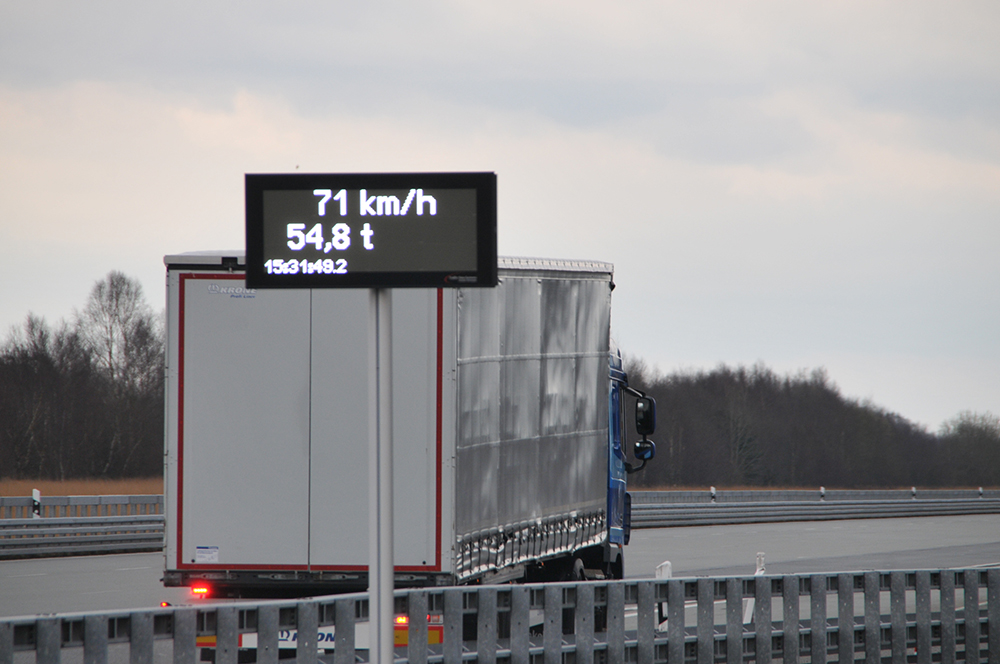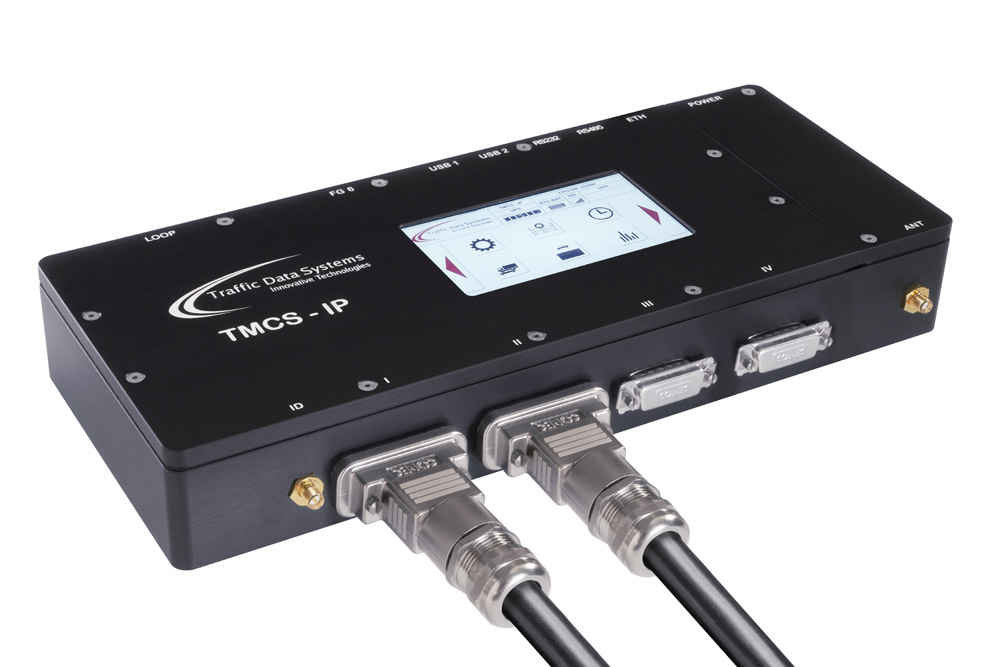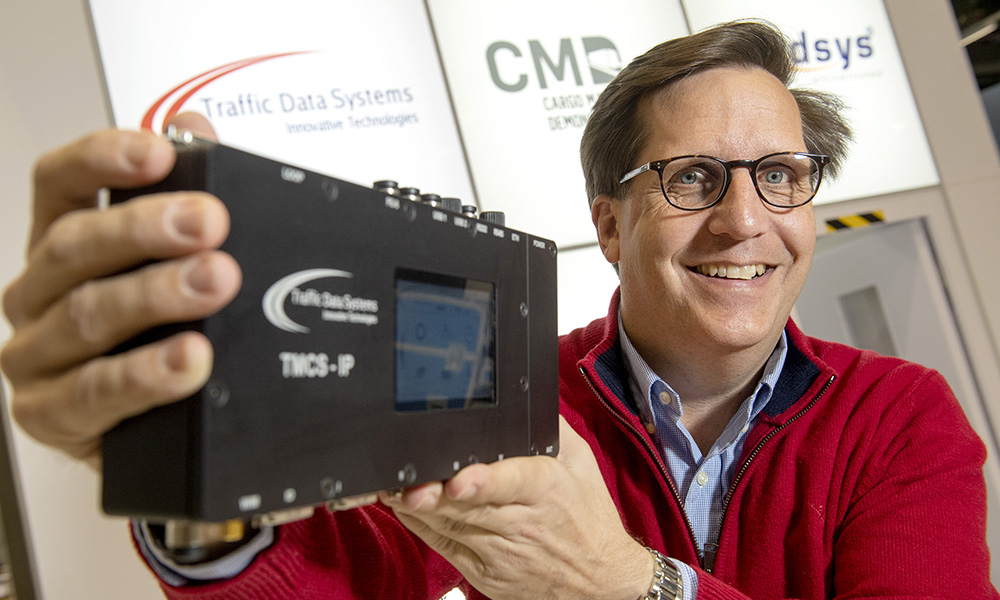
There are interesting moves afoot to create Germany’s first Weigh-In-Motion enforcement site in Hamburg – but Florian Weiss of Traffic Data Systems warns that WIM certification is a complex business.
In the past, Weigh-In-Motion (WIM) was mainly used for statistical (WIM-S) and pre-selection (WIM-P) applications. These abbreviations - as well as WIM-E (enforcement) and WIM-T (tolling) - were created by
Hamburg upgrade
In 2016, we built a three-lane WIM system on the A1 motorway for the city of Hamburg, which has been announced as the host of the
- According to OIML R134 (see Legally certified below) we currently achieve the accuracy classes F (accuracy class single-axle load and axle-group load) and 10 (accuracy class for vehicle mass). This means a maximum error of ±5% (initial verification) and ±10% (in-service inspection).
- We aim for the higher classes E (accuracy class single-axle load and axle-group load) and 5 (accuracy class for vehicle mass). This means a maximum error of ±2.5% (initial verification) and ±5% (in-service inspection). This may not sound like a big step, but it is a quantum leap in the field of OIML R134-certified WIM systems.
- Be aware that the certifying bodies require that 99.9% of all valid measurements have to be within the certified measuring range. This allows you fewer than one wrong measurement out of 1,000.
Of course, wrong measurements are allowed – but they must be identified automatically by the WIM system. This is one major area that needs to be improved. The impact of weather (wind, water, snow, ice and so on) on the measured values also requires further investigation.
Time and money
This takes a lot of time and requires a huge amount of test rides. Vehicles that drive on two lanes, or don’t drive properly, have to be identified, measured correctly or indicated as an ‘improper passage’. This requires us to permanently monitor all lanes beside each other. The metrological institutes - those responsible for applying legal requirements to measurements and measuring instruments - have to certify the matching of WIM and weather data as well as the proper matching and saving of data, images and vehicle profiles. This might not sound too difficult but the whole system - including all sensors, protocols and settings - has to be checked and certified. It also has to be guaranteed that neither the system nor the data can be manipulated. Our aim is to have this ‘product’ certified before 2021. The city of Hamburg, the state of Schleswig-Holstein, the Federal Highway Research Institute, the German Metrological Institute (PTB) as well as ITS Deutschland have already stated that they will support this development.
Legally certified
The key point is that in order to use any measuring device to charge money based on measured values, WIM systems need to be legally certified. Yet with the exception of Kistler´s Data Logger (speed range 5km/h to 65km/h) and our WIM-DSP 32 (speed range 5km/h to 120km/h), no other WIM system worldwide is certified based on a legal national or international standard. WIM systems tend to be either based on COST 323 or on ASTM E1318.However, customers have to be aware that both documents are not legal standards that are accepted by national metrological institutes like, for instance, the German PTB or the Swiss Metrological Institute METAS. Federal metrological institutes only certify based on international legal standards that are issued by the Organisation Internationale de Métrologie Légale (OIML) in Paris.
OIML is an intergovernmental treaty organisation which develops model regulations, standards and related documents for use by legal metrology authorities and industry. So why have Kistler and Traffic Data Systems decided to go for an OIML certification and why don’t other manufacturers do the same? To explain this I would like to repeat a phrase used by the former US president John F. Kennedy: “We choose to go to the moon…and do the other things, not because they are easy, but because they are hard.”
In the last 20 years we have participated in several national and international tenders. Unfortunately we have lost quite a few against officially ‘cheaper’ competitors. Later on, very often customers complained that the systems did not work the way they were promised and wanted support from us. For this reason we have decided to go for an OIML R134 certification, because the requirements are very high and there will be several manufacturers that will not pass them. Certifying bodies will only certify what they have seen and tested themselves - based on international accepted standards.
WIM certification: reaching for the moon
In order get your WIM system certified you have to fulfil several requirements and supply all necessary hardware and software as well as a test track, test vehicles and engineers:
1. You must have a non-public test track with WIM sensors on which you can carry out all required test rides with different vehicles and speeds. Normal roads cannot be used, due to speed limits and for safety reasons.
2. You must supply different loaded and unloaded heavy goods vehicles (such as trucks or tractors with trailers) with gross weights >40t that are capable of speeds from 5km/h to 120km/h. These vehicles are not allowed on normal roads (maximum speed <90km/h) and can only be operated on non-public test tracks. The vehicles have also been loaded at different weights so that you have different gross, axle and wheel weights. With each type and load at least three rides per speed class (10km/h bins) have to be carried out and passed.
3. The OIML test of our system required about 500 test runs with different vehicles, loads and speeds. These special vehicles were only allowed to be driven by the truck manufacturers’ test engineers. The vehicles furthermore have been weighed manually three times a day. The 500 test rides took about two weeks. For this time the test track and trucks needed to be rented - and the drivers, plus our own and the METAS technicians, had to be paid.
4. Every vehicle passage and its gross axle and wheel weights have been evaluated by METAS, vehicle by vehicle.
5. A WIM simulator had to be developed and handed over to METAS for the climate test, because the certification also requires that measurements at very low and very high temperatures do not change very much (stability over temperature). Our system showed a failure <1% in a temperature range between -30°C and +70°C.
6. The certifying body also requires that the complete WIM system has passed an electromagnetic compatibility (EMC) test successfully according to the current standards (emission standard for industrial environments and immunity for industrial environments) report for the WIM system. This is required in order to ensure that measurements cannot be influenced by a cell phone, for instance, or that an on-board unit can´t be influenced by a WIM system.
Traffic Data Systems has proved in 2016-17 that current hardware and software fulfil the requirements to pass the OIML R134 requirements for low and high speeds.
As a result of this, WIM systems can be used for automatic enforcement and tolling, as long as they are certified according to OIML R134.











